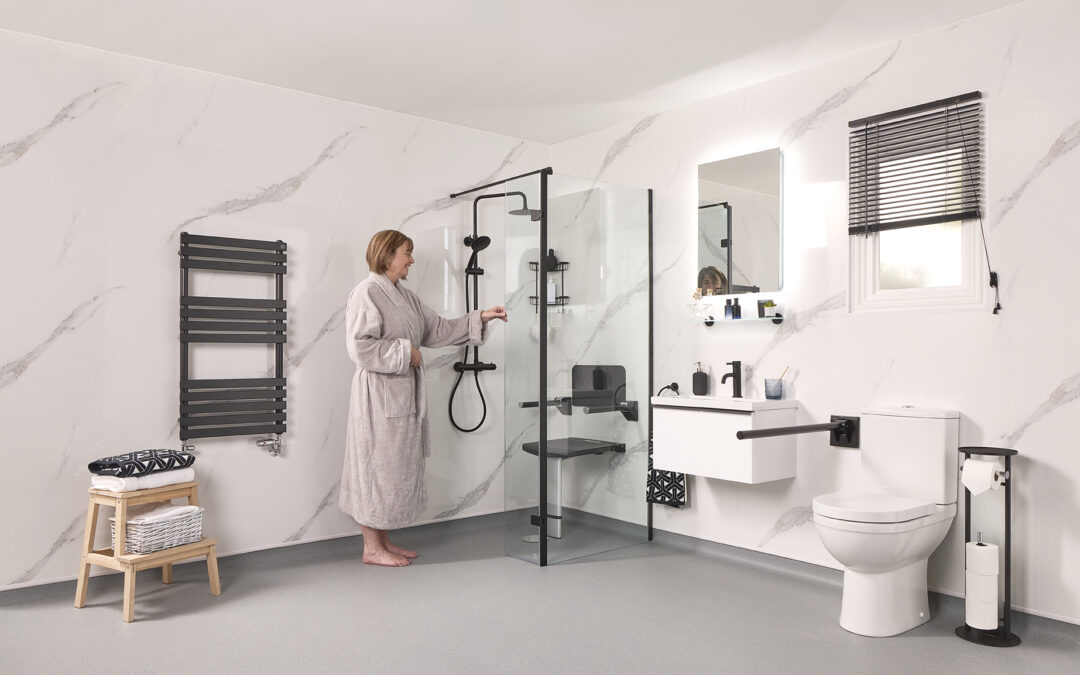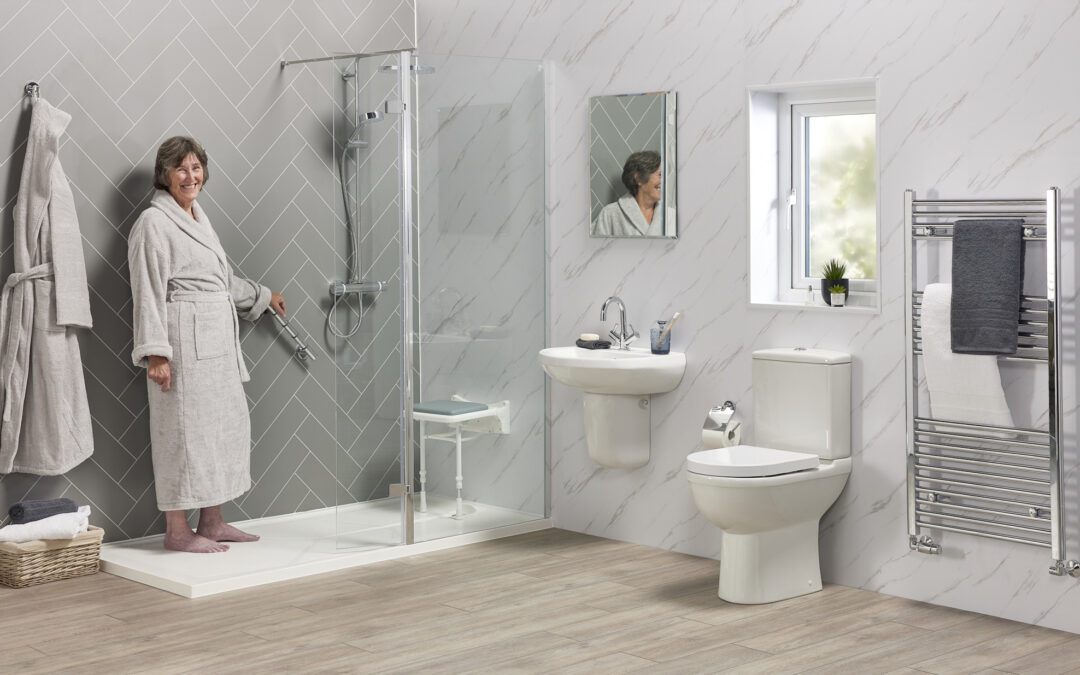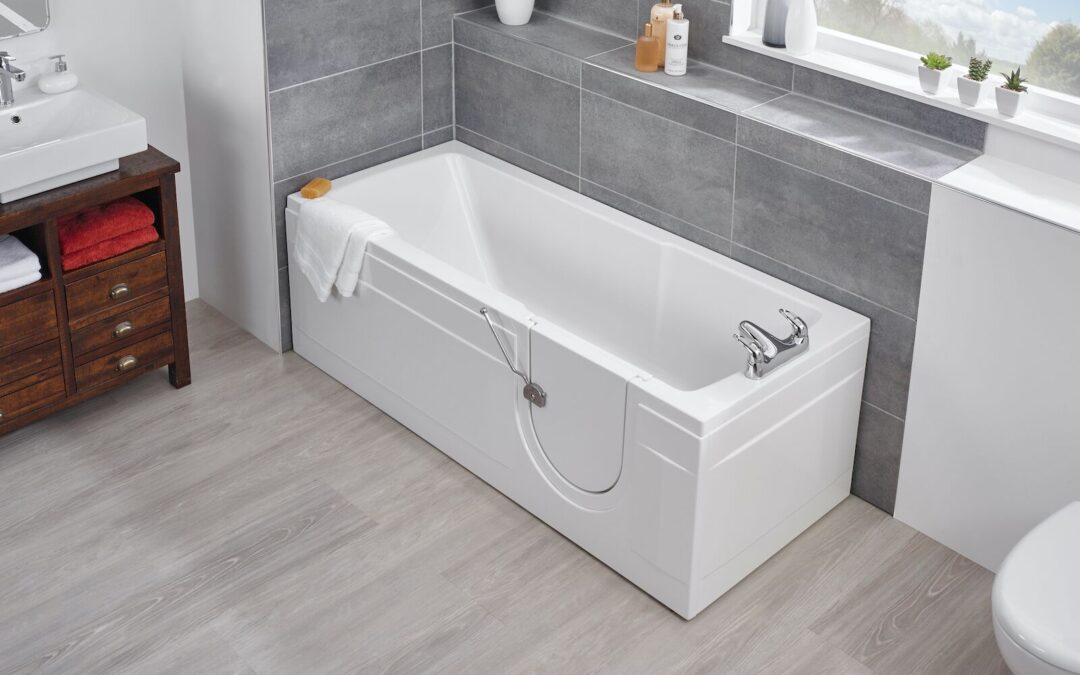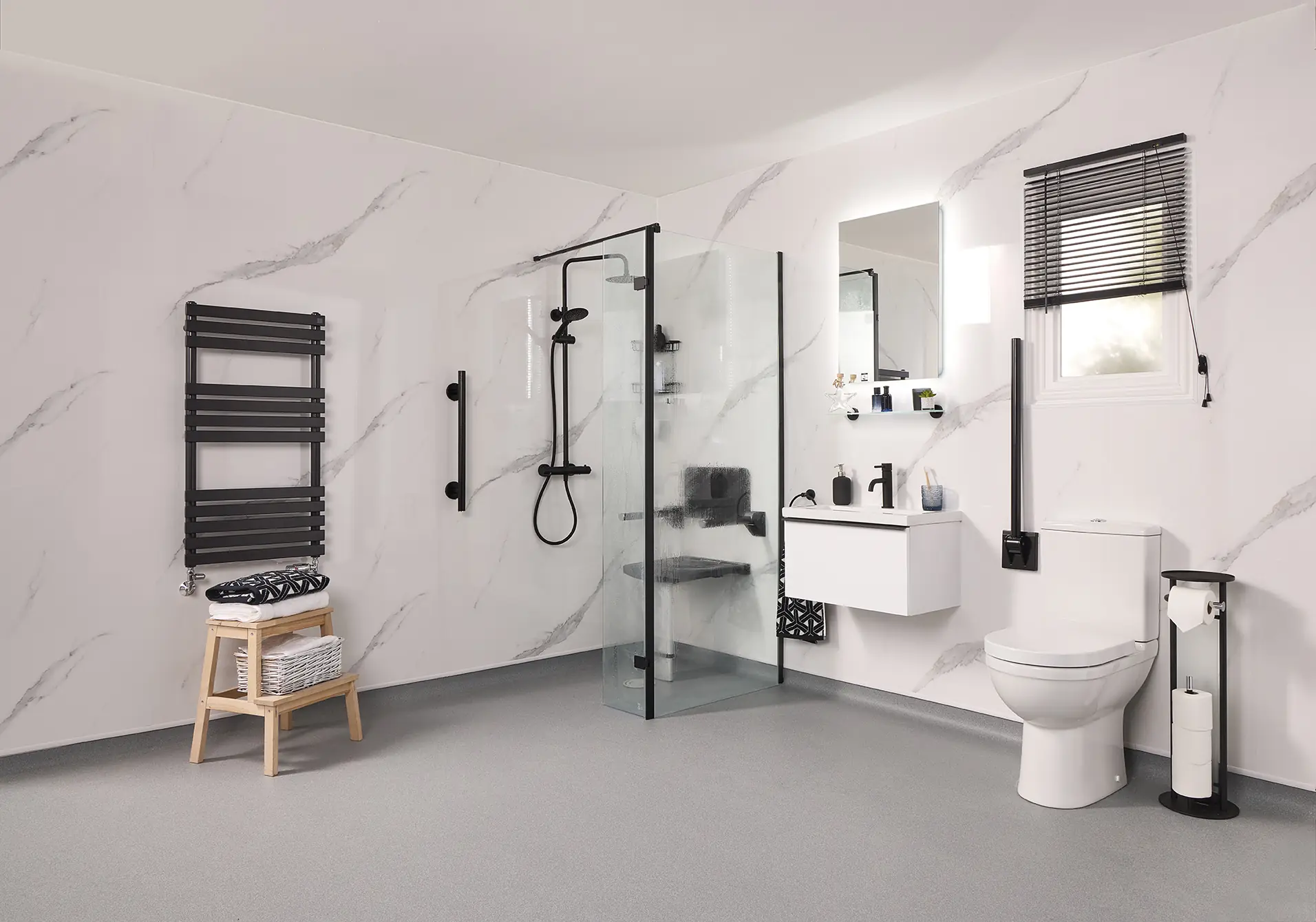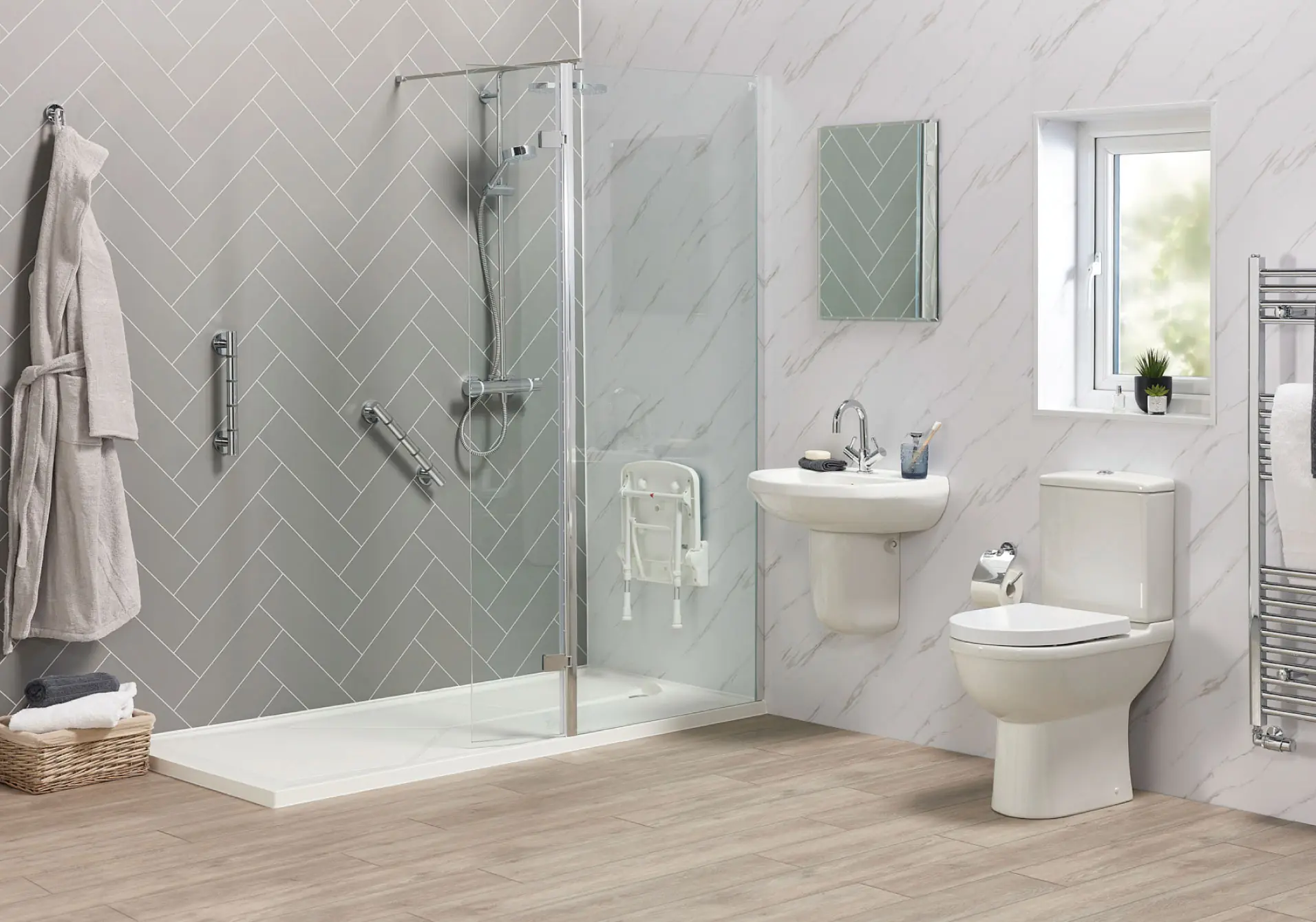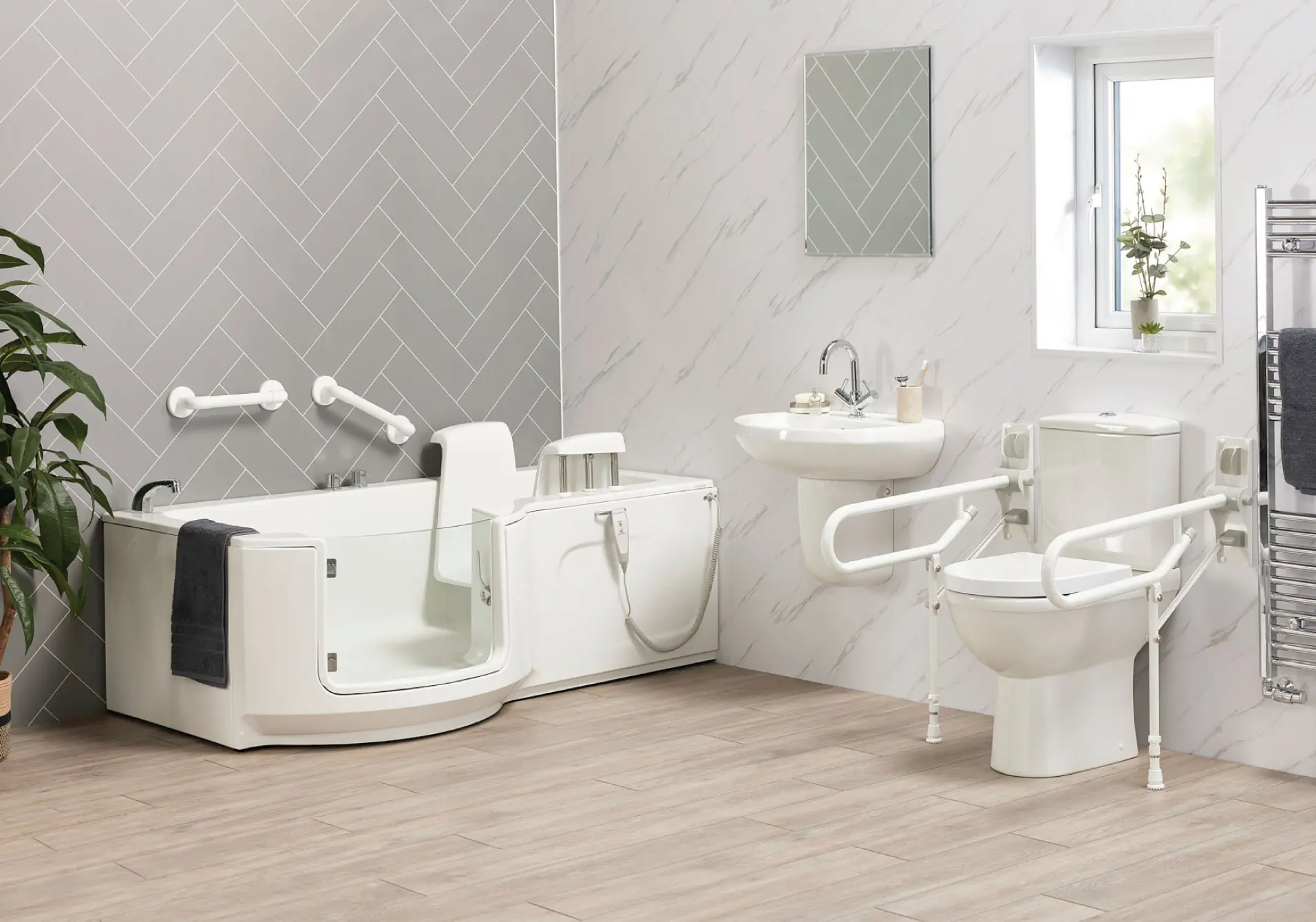Bathing, a daily ritual for many, can become a challenge as we age or face mobility limitations. For the disabled and elderly, traditional bathing facilities may pose safety concerns and restrict independence. Walk-in baths have emerged as a transformative solution, offering a blend of safety features, accessibility, and comfort tailored to the unique needs of individuals with mobility challenges. In this comprehensive guide, we’ll explore the myriad benefits and considerations surrounding walk-in baths, with a focus on how these specialised fixtures contribute to a safer and more enjoyable bathing experience for the disabled and elderly.
How do Walk-In Baths Work?
Walk-in baths, purposefully designed for individuals with mobility constraints, distinguish themselves through thoughtful features that redefine the bathing experience. The essence lies in their accessibility, ensuring that entering and exiting the bath is as easy and secure as possible. Let’s delve into the key elements that make walk-in baths an indispensable addition for the disabled and elderly.
Low-Threshold Entry
The defining feature of walk-in baths is the low-threshold entry, eliminating the need to step over high sides, a potential stumbling block for those with limited mobility. This low entry point allows for easy and safe access without the risk of trips or falls.
Watertight Door
The walk-in bath is equipped with a watertight door, sealed when closed, ensuring a secure and leak-free bathing experience. This feature not only enhances safety but also allows for convenient entry and exit.
Comfortable Seating
Built-in seating provides a comfortable perch for individuals to bathe in a seated position. This is particularly beneficial for those who may find standing for extended periods challenging, offering a secure and relaxing bathing experience.
Safety Handrails
Strategically placed handrails within the walk-in bath offer additional support and stability. These handrails aid users in maneuvering in and out of the bath, fostering a sense of independence and confidence.
How Easy are Walk-in Baths for Elderly and Disabled?
Using a walk-in bath involves a straightforward and user-friendly process, ensuring that individuals with varying degrees of mobility can bathe with autonomy and dignity. Let’s walk through the steps:
Entry
The low-threshold entry facilitates easy access. Users can open the watertight door, walk in, and comfortably sit on the built-in seat, eliminating the need for strenuous physical effort or assistance.
Door Sealing
Once inside, the user can securely close the watertight door. The sealing mechanism ensures a tight closure, preventing water leakage during the bathing process.
Filling the Tub
With the door securely closed, users can fill the bath with water to their desired level. Many walk-in baths are equipped with quick-fill features, minimising the waiting time for the bath to be ready.
Bathing
Individuals can enjoy a relaxing bath in the seated position. The built-in seating provides comfort, and the safety handrails offer additional support for maneuvering and stability.
Draining
After completing the bathing experience, users can conveniently drain the water. Walk-in baths typically have efficient drainage systems, allowing for a swift and hassle-free process.
Additional Benefits of Walk-in Baths?
While safety is paramount, walk-in baths offer additional benefits that address common concerns and misconceptions:
Hydrotherapy Options
Many walk-in baths come with optional hydrotherapy features, including therapeutic water jets that provide relief for sore muscles and joints, contributing to overall well-being.
Customisation
Walk-in baths are available in various sizes and configurations, allowing for customisation based on the user’s specific needs and the available bathroom space.
Aesthetic Appeal
Contrary to the notion that safety features compromise aesthetics, walk-in baths are designed with a focus on both functionality and visual appeal. They seamlessly blend into the bathroom environment, offering a modern and stylish look.
Real Stories: Testimonials from Users
To truly understand the impact of walk-in baths, let’s hear from those who have experienced the benefits firsthand. Jane, a user of a walk-in bath from EA Mobility, shares, “The walk-in bath has been a game-changer for me. It’s not just about safety; it’s about regaining the joy of bathing independently. The low entry, comfortable seating, and safety handrails make every bath a pleasure.”
John, a caregiver, adds, “Installing a walk-in bath for my elderly father was a decision we didn’t realise we needed until we saw the difference it made. It’s not just about accessibility; it’s about preserving dignity and ensuring a positive bathing experience for our loved ones.”
Considering Walk-In Baths with EA Mobility
At EA Mobility, we recognise the importance of creating tailored solutions that empower individuals with mobility challenges. Our walk-in baths are crafted with precision and care, reflecting our commitment to safety, accessibility, and comfort. If you’re considering enhancing your bathing experience or that of a loved one, our team at EA Mobility is ready to assist. Contact us today at FREEPHONE 0808 2812665 to explore our range of walk-in baths and discover how we can transform your bathing routine into a secure, accessible, and enjoyable experience.




